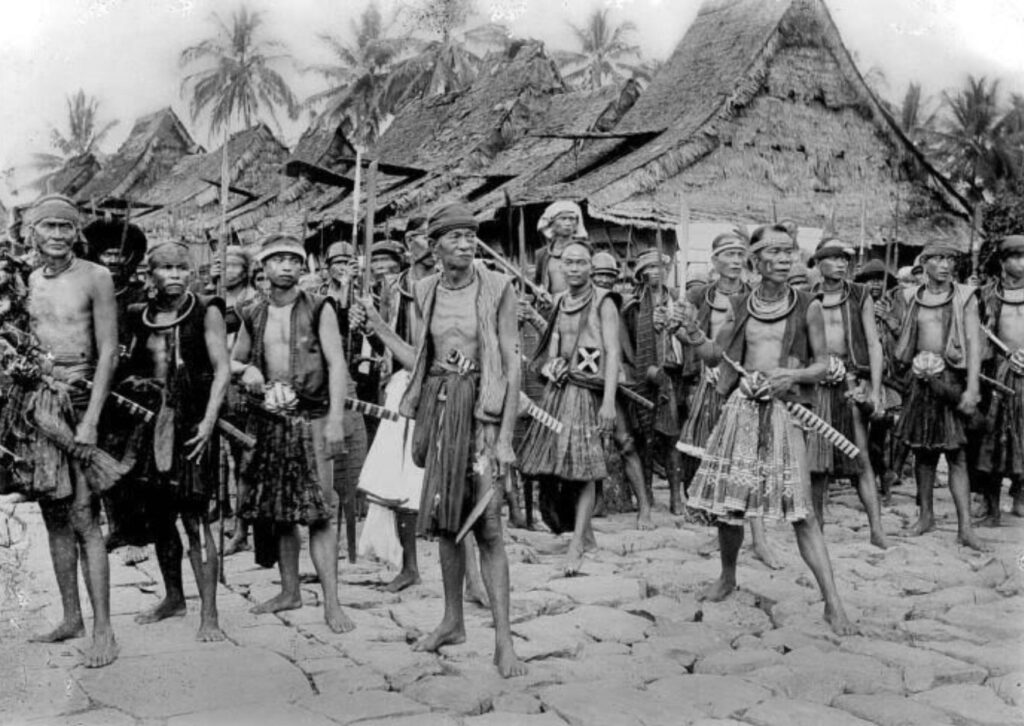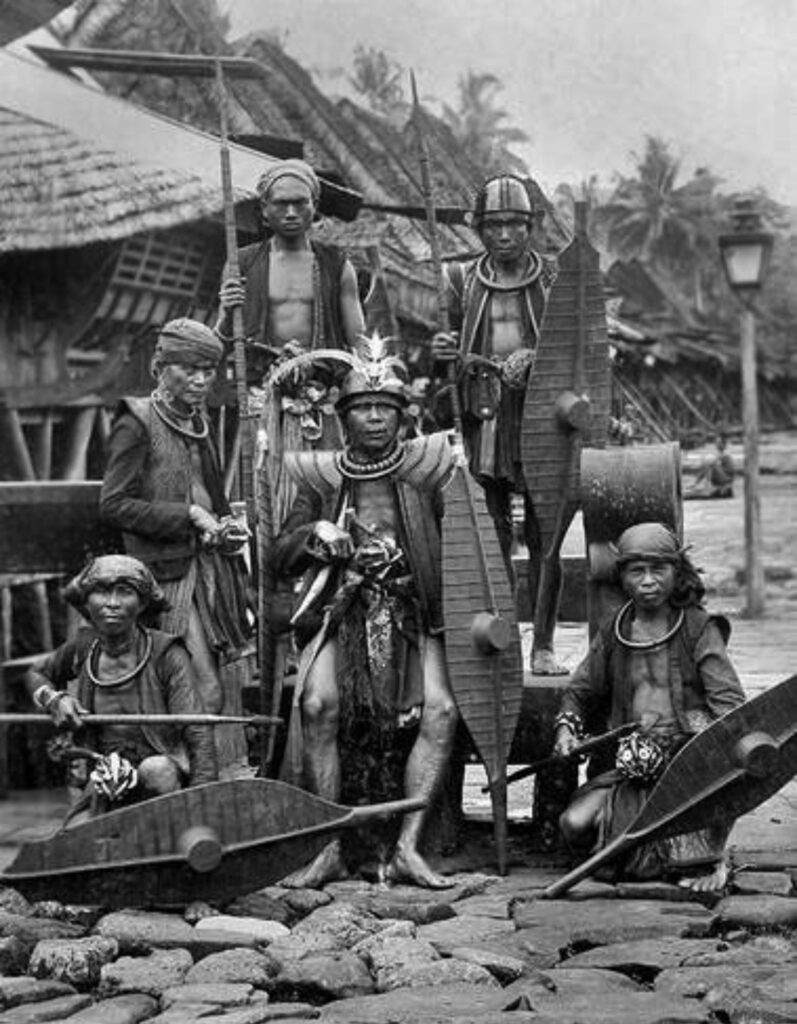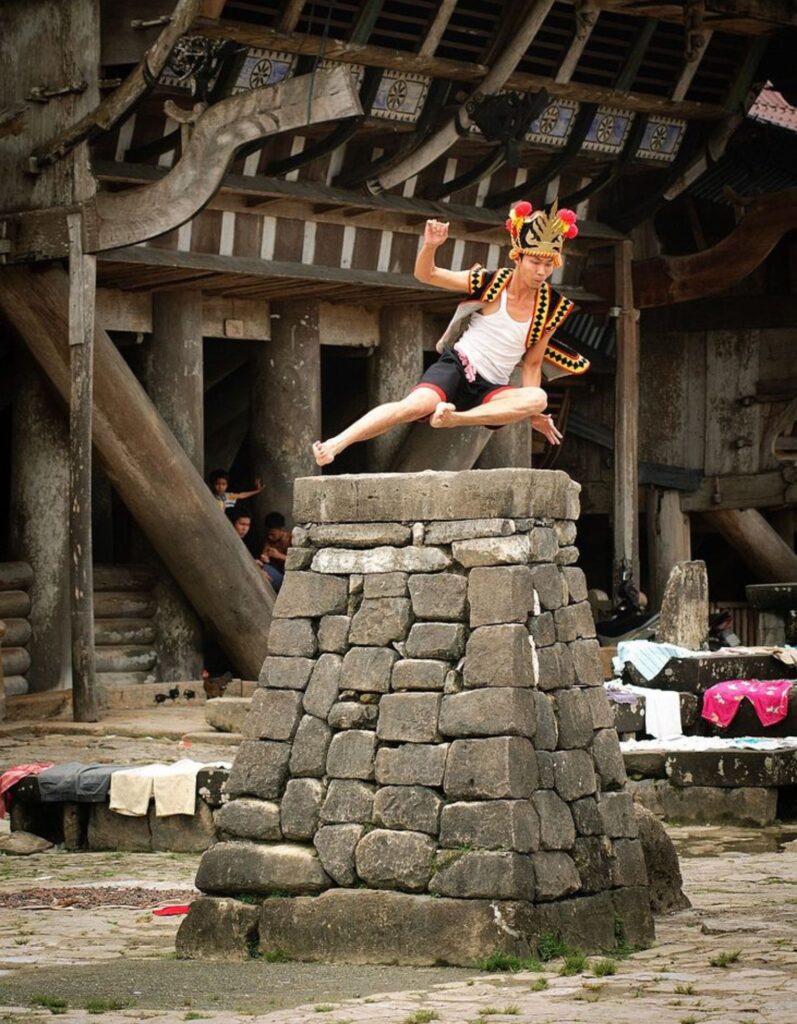Uncategorized
The Leap of Maturity: Stone-Jumping Ritual of Nias
Nias island is located in North Sumatra and is surrounded by the Indian Ocean. The region is well known for its waves, attracting surfers from around the world to hunt for one of the best waves in the world. However, Nias offers more than just a world-class surfing experience. The island, locally known as Tanö Niha, meaning “land of man,” holds a megalithic culture that is still preserved to this day. Large megalithic stones from ancient times can still be found in the inland areas. The people of Nias call themselves Ono Niha, meaning “descendants of man.” The people of Nias still live in a deeply rooted culture and their lives are still governed by customary law called fondrakö.
One of Nias’ most recognized cultural practices is the stone-jumping tradition, which has become an icon of the island’s heritage. In the local language, stone-jumping is called fahombo batu. This practice is linked to the megalithic era. While it is widely associated with Nias culture, not all Nias communities practice it. The tradition is specific to the Teluk Dalam area in South Nias. During the ritual, individuals jump over a trapezoid-shaped stone approximately 2 meters high and 40 cm thick. Smaller stones placed nearby are used as stepping points for the leap.

Stone-jumping serves as a way to measure the maturity of youngsters in Nias. Young men who are able to jump over the stones are considered mature. Therefore, this tradition is only meant for young men who have reached adulthood. In addition to measuring maturity, stone-jumping is also a precondition for marriage, as young men who succeed in the stone-jumping test are considered true men.
Historically, the stone-jumping tradition is tied to the island’s past conflicts, particularly inter-tribal warfare. During these times, only young men were selected and trained as warriors. Villages in Nias were fortified with high stone walls for protection, and the ability to leap over these barriers was crucial. Stone-jumping became a method for developing the agility and mental readiness of young men required for battle.
Becoming a warrior was regarded as a significant honor. However, not all young men succeeded in the challenge. Those who failed were not accepted as soldiers, and were viewed differently within the community. Mentally, the failed young men might feel inferior, while those who succeeded would be considered mature and ready to defend their village. They would be honored and gain higher social status, and their family’s status would also be elevated. Therefore, families often held celebrations to honor sons who passed the stone-jumping test.

Stone-jumping holds a spiritual significance and is not done carelessly. There are rituals that must be performed before jumping over the stones. The young men perform rituals to ask for permission from their ancestors and the spirits of those who have successfully jumped over the stones. The goal is to avoid accidents while performing the jump. Additionally, there is a belief that those who successfully complete the stone-jumping are blessed by the spirits of their ancestors and the previous stone-jumpers, enabling them to succeed. There is also a belief that those who succeed in stone-jumping are influenced by their lineage.
Due to the importance of the tradition, children begin training from around the age of seven, starting with rope-jumping and progressing to increasingly higher jumps. The final goal is to complete the actual stone-jumping. In the past, training was more intense and included jumping over stones with nails and sharp bamboo, simulating the dangers of enemy fortifications.

Today, stone-jumping is no longer used for selecting warriors. However, the tradition is still preserved as a symbol of cultural identity. It is performed during special ceremonies and has become a popular attraction for visitors. Festivals are held to celebrate and promote the tradition, helping to ensure it remains part of Nias’ living heritage.
References:
Minawati, R., Rajudin, & Alamo, E. (2024). Stone jumping as a tourism object in Bawomataluo Fau, Teluk Dalam, South Nias. Asian Journal of Social Science and Management Technology, 6(2), 66-72.
Pratiwi, I. (2024). Exploring physics concepts on the “Fahombo” stone jumping tradition in Nias tribe, Indonesia. The Kyoto Conference on Arts, Media & Culture 2024.
DOI: 10.22492/issn.2436-0503.2024.34


